The timing of the earliest unequivocal human dispersals into Alaska over the Bering Land Bridge corresponds with a shift to warmer and wetter conditions in the region between ~14,700 and ~13,500 years ago. Researchers reconstructed the terrestrial climate from the last glacial maximum, about 21,500 years ago, to the present from the Bering Land Bridge’s […]
Category: Article scientifique
Iconic Burgess Shale creature reconstructed 
Waptia fieldensis Walcott, 1912 is an iconic animal from the middle Cambrian Burgess Shale biota in British Columbia that had lacked a formal description since its discovery at the beginning of the 20th century. Drawing on some 1,800 specimens, researchers three-dimensionally reconstructed the ~508-million-year-old animal’s functional anatomy. The shrimp-like animal’s compound eyes, antennae, mandibles, and […]
Painted Lady butterflies survive round-trip across the Sahara
Researchers demonstrate that the Painted Lady butterfly (Vanessa cardui) crosses the Sahara Desert and the Mediterranean twice, travelling south to the sub-Sahara in the fall, then reversing the journey the following spring. The Palearctic–African migratory circuit is similar to that of migratory birds. However, the Painted Lady butterfly, which needs both temperate and tropical habitats to […]
Coral coastal defence compromised by climate change 
Nature Published June 13, 2018 (News release from Nature Research Press) The current growth rate of coral reefs in the tropical western Atlantic and Indian Ocean is almost keeping pace with projected sea-level rise, but as coral reefs protect tropical and subtropical shorelines around the globe, small island nations may lose a key contributor to coastal protection against flooding […]
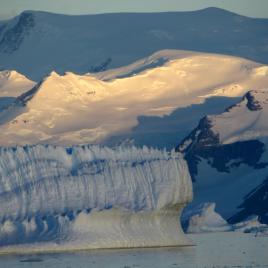
Three trillion tonnes of ice lost from Antarctica since 1992 
The Antarctic Ice Sheet lost about 3 trillion tonnes of ice between 1992 and 2017. This figure corresponds to a mean sea-level rise of about 8 millimetres. Antarctica’s ice sheets, which contain enough water to raise global sea level by 58 metres, are a key indicator of climate change and driver of sea-level rise. Nature […]
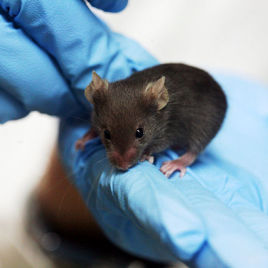
Urban rat races: how cities affect rat genetics and diversity 
Scientists examined rat populations in four cities to assess population-genetic structure, diversity patterns, and dispersal dynamics. Landscape features consistently coincided with genetic breaks, genetic diversity consistently varied within cities—suggesting different population dynamics—and local dispersal dynamics revealed similar trends. Major roads genetically isolate rat populations in Vancouver and Salvador, whereas resource deserts and waterways force genetic […]

Baby formula changes gut bacteria and increases overweight risk 
Breastfeeding for longer may change a baby’s gut bacteria to protect them from becoming overweight, according to a Canadian child-health longitudinal study. Researchers found that babies who were fed only formula were three times as likely to be overweight compared with their breastfed peers. The formula-fed babies also had more diverse gut bacteria—this could be […]
Size-restricted fishing shapes age-related codfish habitat 
Researchers used population dynamics modeling to assess the effects of size-specific and age-specific harvesting of Atlantic cod on Canada’s eastern Scotian Shelf. They found that fishing to a depth of 80 metres accounted for 72 per cent of the observed age-related cod-habitat deepening, and increasing fishing depth to 120 metre accounted for all of the […]
Loss of marine-food availability forces Andean condor to fly further for food; other scavengers likely also affected 
As numbers of marine mammals have decreased and human use of coastlines has increased, the Andean condor diet has changed to include one-third to one-half less marine-derived food than a century ago. This influences their movement patterns, with some birds foraging up to 86 km from near-coast nesting sites and over a mountain range to find […]
Ancient reptile revamps lizard family tree 
A fossil previously assigned to a more-inclusive group of ancient reptiles recently has been revealed to have features unique to the group of animals, called squamates, that today includes snakes and lizards. Megachirella wachtleri, about 72 million years older than the next earliest-known true squamate, increases understanding of the origin of squamates and other reptiles, and shows […]

Vitamin D supplements during pregnancy may reduce fetal or newborn mortality 
A review and meta-analysis of 24 randomized clinical trials involving 5,405 pregnant women examined the effects of vitamin D supplementation during pregnancy on several infant outcomes. Babies who had experienced prenatal supplementation had higher calcium levels and weights at birth and throughout the first year. Low-dose supplementation was also associated with reduced risk of fetal […]
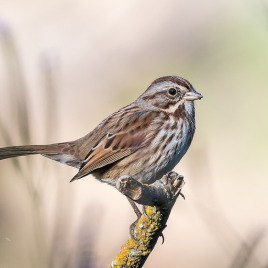
Stress affects songbirds’ ability to understand changes in songs
Songbirds living near oil and gas fields in Canada’s prairies adapt to noise by changing the pitch and volume of notes in their calls, but stress affects how well other birds in the species understand them. In this first study to look at the interaction between stress and behaviour in birds at oil wells, researchers […]
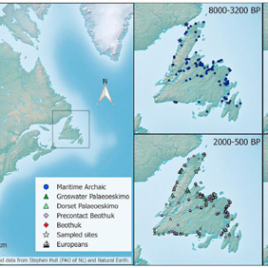
Ancient DNA sheds light on the history of Newfoundland’s Indigenous settlements 
A recent analysis of ancient DNA provides evidence in support of a theory that Newfoundland was populated several times by distinct cultural groups, specifically the Maritime Archaic and Beothuk. Researchers performed genetic analysis of 74 ancient remains, including ones from North America’s oldest burial mound. Their findings showed that the two Indigenous groups didn’t share […]

SMCC Webinar: Sea Level Rise and Climate Change | Links, background reading & resources
SMCC Webinar – Sea Level Rise and Climate Change 12:00 PM ET, Thursday, June 1, 2017 In partnership with the Canadian Meteorological and Oceanographic Society, the Canadian Climate Forum, and the Marine Environmental Observation Prediction and Response Network Links, background reading and resources from our panelists: Dr. Adam Fenech – Director of the Climate Lab […]
STIs promote monogamy, but only in certain instances
Sexually transmitted infections (STIs) may have helped foster monogamy in some human societies, according to a new study. Researchers found that when a society is large the prevalence of STIs becomes endemic, reducing fertility rates and favouring the emergence of monogamists in society. However in smaller groups, with a maximum of 30 people, STI outbreaks […]
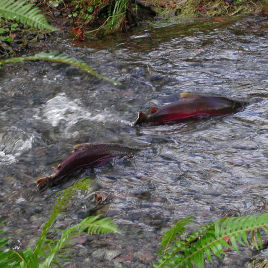
Salmon like the dark side
Salmon living in tanks with darker backgrounds are typically less aggressive than those living in a lighter coloured environment, according to new research. The researchers divided 100 Coho Salmon into 10 different tanks, each with different colour patterns, and monitored their behaviour. They found that the salmon prefered the darker areas, and were less aggressive […]